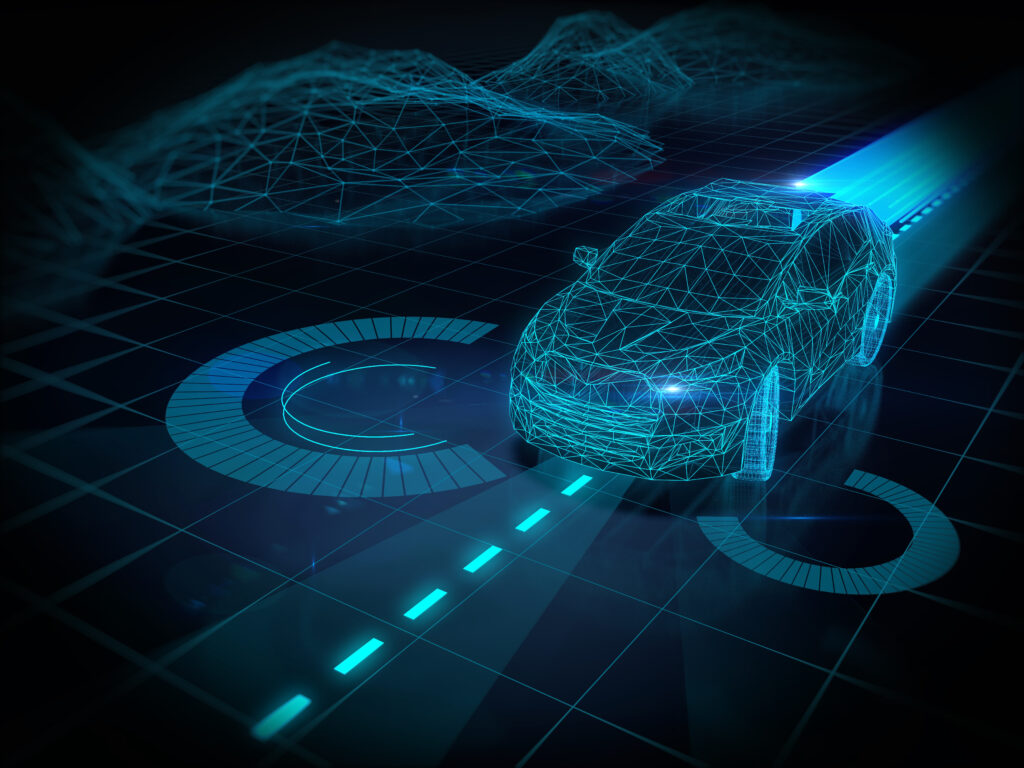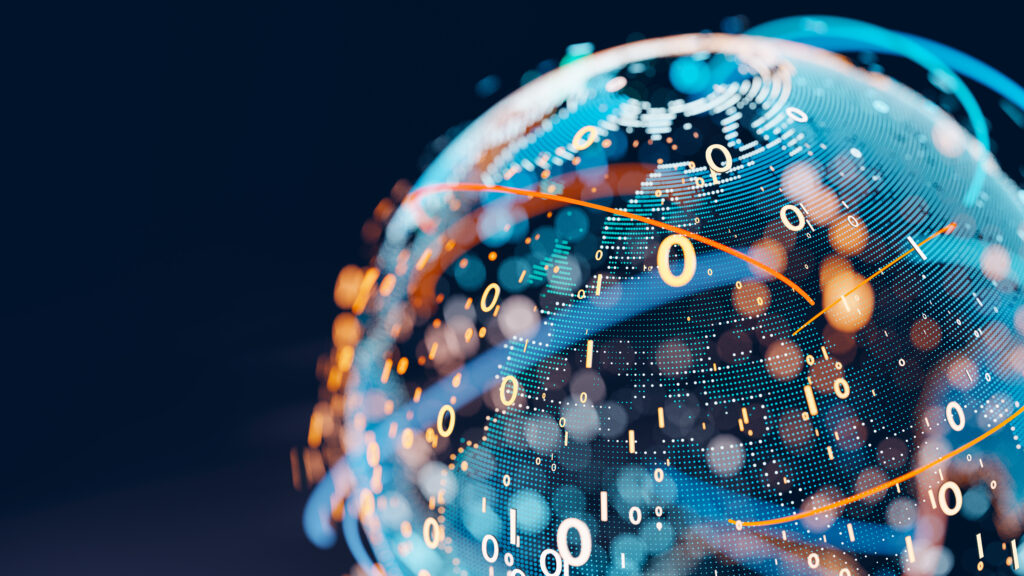Mobile telecoms technology has dramatically improved of the last 40 years and has transformed the way we communicate, both in industry and society at large. There has been a steady increase in technology development from analogue first generation, through 2G GSM, the first digital mobile communications, 3G, 4G, to the introduction of 5G technology.
The International Telecommunication Union (ITU) has now released report ITU-R M.2516-0 ‘Future technology trends of terrestrial International Mobile Telecommunications systems towards 2030 and beyond’, which is likely to form 6G. The report provides information on the technology trends for terrestrial International Mobile Telecommunications (IMT) systems.
5G made IMT systems more efficient, fast, flexible, and reliable when providing a variety of services such as enhanced mobile broadband (eMBB), ultra-reliable low-latency communications (URLLC), and massive Machine-Type Communications (mMTC). Besides significantly enhancing the data rate and mobility provided in 4G, 5G introduced advantages such as spectrum efficiency, latency, reliability, connection density, energy efficiency, and area traffic capacity to efficiently support emerging usage scenarios and applications.
Significant advances
5G comes with various new features and capabilities, including network slicing, Orthogonal Frequency-Division Multiplexing (OFDM) and Massive Multiple Input, Multiple Output (MMIMO). 5G also introduces another new standard called 5G New Radio (NR) to replace 4G LTE (Long Term Evolution). 5G NR will build off LTE’s best capabilities and bring new benefits, such as increased energy savings for connected devices and enhanced connectivity. 5G will also operate on a new high-frequency spectrum — millimetre wave (mmWave) — which operates on wavelengths between 30GHz and 300GHz, compared to 4G LTE’s wavelengths of under 6GHz. Due to the mmWave spectrum, 5G requires new, small cell base stations to operate and function. The key differences between the 4G and 5G network include far lower latency, larger potential download speeds, and far smaller base stations and cell densities.
Since 2014, there have been significant advances in IMT technologies and their deployment. IMT capabilities are being continuously updated in line with user trends and technological developments. So, M.2516-0 now provides information on the technology trends of terrestrial IMT systems up to 2030 and beyond such as emerging technology trends and enablers, with technologies to enhance the radio network. This is all likely to form 6G.
The report says that the role of modularity and complementarity of new mobile telecoms solutions will become increasingly important in the development of more complex applications and systems. The use of data and algorithms, such as Artificial Intelligence (AI), will also play an important role and that the technology innovations must complement each other.
Trends
Key new services and application trends discussed in the report include that community-driven networks and Public–Private Partnerships (PPP) will enable new models for future service provisioning. Privacy will be strongly influenced by the increased platform data economy, intelligent assistants, connected living, transhumanism (how humans can evolve beyond current physical and mental limitations by means of science and technology), and digital twins.
An increasing number of businesses are starting to adopt a platform data economy and digital strategies to remain competitive, and companies are creating online networks to facilitate greater digital interactions between people. Such platforms available today, range from those providing services, products, payments, and many more.
Monitoring and steering of the circular economy will be possible, helping to create better understanding of a sustainable data economy. Development of products and technologies for zero-waste and zero-emission, and immersive digital realities to facilitate novel ways of learning, understanding, and memorising, will be required.

The role of IMT for 2030 and beyond will be to connect a number of feasible devices and processes, as well as humans to a global information grid in a cognitive fashion. The trend towards higher data rates will continue, leading to peak data rates approaching Tbit/s indoors which will require large available bandwidths giving rise to THz communications. Indoor coverage at such rates is not easy and it’s an area that 5G has not addressed.
Holographic communications will provide real-time three-dimensional representation of people, things, and their surroundings into a remote scenario. This will require at least an order of magnitude high transmission rates, ultra-low latency, and powerful 3D display capability.
Advanced robotics scenarios in manufacturing will need a maximum communication link latency target in the order of 100μs and round-trip reaction times of 1 millisecond. Human operators will monitor remote machines by VR or holographic-type communications, aided by tactile sensors. This could also involve actuation and control via kinaesthetic (tactile) feedback.
Vehicle-to-Vehicle (V2V), Vehicle-to-Infrastructure communication (V2I), and autonomous driving could result in a large reduction of road accidents and traffic jams. Latency in the order of a few milliseconds will likely be needed for collision avoidance and remote driving.
Tele-diagnosis, remote surgery, and telerehabilitation in healthcare will be possible on a regular basis. Tele-diagnostic tools, medical expertise/consultation could be available anywhere and anytime, regardless of the location of the patient and the medical practitioner. This could include remote and robotic surgery where a surgeon gets real-time audio-visual feeds of the patient that is being operated upon in a remote location.
Extremely high-rate information access points in railway stations, shopping malls, and other public places will be available. The data rates for these could be up to 1Tbps. The points will provide fibre-like speeds and could also act as the backhaul needs of millimetre-wave (mmWave) small cells. Co-existence with contemporaneous cellular services as well as security will need to be resolved.
Connectivity everywhere
‘Connectivity for everything’ will include real-time monitoring of buildings, environment, railways, roads, critical infrastructure, water, and power. The internet of bio-things through smart wearable devices, and intra-body communications achieved via implanted sensors will also drive the need for extensive reliable connectivity.
It is anticipated that private networks, applications, or vertical-specific networks, mini and micro, enterprises, and IoT / sensor networks will increase. Interoperability is one of the most significant challenges in such ubiquitous connectivity smart environments, where different products, processes, applications, use cases, and organisations are connected.
Interactive immersive experience use cases will have the ability to seamlessly blend virtual and real-world environments and offer new multi-sensory experiences to users. X-Reality, such as Virtual Reality (VR), Augmented Reality (AR), and Mixed Reality (MR) is expected to provide higher resolution, which will also require higher transmission data rates and lower end-to-end latency.
Sensing based on measuring and analysing wireless signals will open opportunities for high-precision positioning, ultra-high-resolution imaging, mapping and environment reconstruction, gesture and motion recognition, which will demand high sensing resolution, accuracy, and detection rates.
Digital twins will demand real-time and high accuracy sensing to ensure the accuracy, and low latency and high data transmission rates to guarantee real time interaction between virtual and physical worlds.
Enabling efficient Machine Type Communication (MTC) will allow machines and devices to communicate with each other without direct human involvement. Real-time distributed learning, joint inferring among proliferation of intelligent devices, and collaboration between intelligent robots will demand re-thinking of communication system and network design.
In order to connect the unconnected and provide continuously high quality mobile broadband service in various areas, it is expected that the interconnection of terrestrial and non-terrestrial networks will facilitate the provision of such services. Key considerations include sustainability/energy efficiency, peak data rate/guaranteed data rate, latency, jitter (close to zero), sensing resolution and accuracy.
Sensing based services, including traditional positioning and new functions such as imaging and mapping, will be widely integrated with future smart services, including indoor and outdoor scenarios. Very high accuracy and resolution will be needed to support a better service experience.
Networks in the future should be able to provide global coverage and full connectivity by wireless and wired, terrestrial and non-terrestrial coverage with diverse multi-layer architecture. The full connectivity network should support intelligent scheduling of connectivity according to application requirements and network status to improve the resource efficiency and service experience. It will extend the provision of quality guaranteed services from outdoor to outdoor from urban to rural areas and from terrestrial to non-terrestrial locations.

High-speed comms for high-speed transport
Future systems will not only support devices on land, including high-speed trains, but will also provide services to devices in high-speed airplanes, drones, and so on. With new services and applications, more spectrum will be required to accommodate extensive mobile data traffic growth. This may require novel usage of low and mid band, and the extension to much higher frequency bands with much broader channel bandwidth. The smart utilisation of multiple bands and improvement of spectrum efficiency through advanced technologies will be essential to achieving high throughput in limited bandwidths.
With huge numbers of new services and applications the network is required to satisfy diversified demand and personalised performance. Soft networks will need to be designed as fully service-based and native cloud-based radio access networks, which can guarantee QoS and provide consistent user experience.
The future mobile system will have stronger capabilities and support more diversified services, which will inevitably increase the complexity of the networks. Artificial Intelligence (AI) reasoning will be embedded everywhere in the future network, including physical layer design, radio resource management, network security, and application enhancement, as well as network architecture, which will result in a multi-layer deep, integrated, intelligent, network design.
Security
Networks in the future will support more advanced system resilience for reliable operation and service provision, with security to provide confidentiality, integrity and availability, privacy, and safety for both humans and the environment.
Security algorithms will use machine learning to identify attacks and how to respond to them. Continuous deep learning on a packet/byte level and applying machine learning will enforce policies, detect, contain, mitigate, and prevent threats or active attacks.
A powerful, controllable radio environment will be able to dynamically change the characteristics of the radio propagation environment and create favourable channel conditions to support higher data rate communication and improve coverage.
All these requirements will not be there on day one, just like it has taken time to deliver all the performance of 3G and 4G, and many 5G features are still some years away. However, there has been a huge step in mobile communication capabilities over the years and the ITU report suggests this is not likely to stop, and that the advances in mobile communications technology will continue.
Will the rail industry be able to benefit from the advances? Hopefully it will for both the good of rail and society.
Image credit: istockphoto.com

